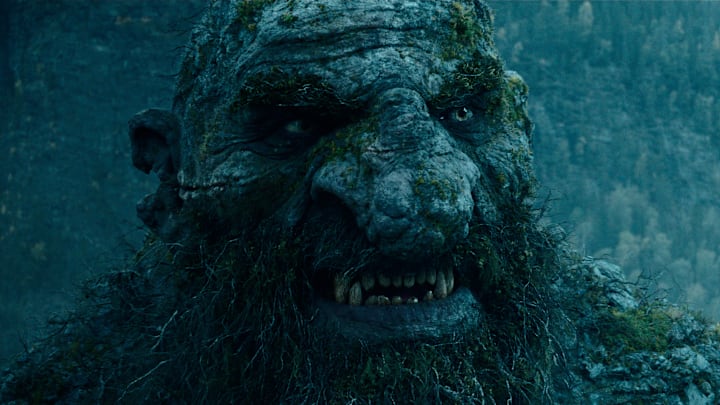A teenage boy named Harry Potter Jr. battles magical creatures as he defends his friends and family from an unseen, incoming attack. That plot description may sound familiar, and that's because it's nearly identical to the storyline of Harry Potter and The Sorcerer's Stone.

In truth, that plot is the basis for John Carl Buechler's 1986 film Troll. This 80s fantasy thriller centers around a troll trying to regain lost power after a quest for domination goes awry—kind of like Voldemort in The Sorcerer's Stone. The main protagonist, however, is a teenage boy named Harry Potter (Noah Hollaway), who gets most of the screen time. Even funnier is the fact that Harry starts out as an everyday kid with zero knowledge of the magical world until he inadvertently stumbles into it—quite similar to how Rowling's version of Harry Potter lives an unremarkable life until magic shows up on his doorstep.
Additionally, the young hero gains a unique magical ally in the form of Eunice St. Clair (June Lockhart), who mirrors Hagrid character in the film. She even sends Harry Potter Jr. off with a similarly heartwarming message, "You did good in there, kid," at the film's close.
In the movie version of The Sorcerer's Stone, Hagrid (Robbie Coltrane) informally gives his young ward permission to perform small feats of magic while in the muggle world. Such a gesture signifies that he trusts Harry, based on his growth as a wizard in his first year at Hogwarts. It's analagous to the "atta boy" that Eunice gives her Harry when they depart the previously troll-infested building.
How Are The Two Stories Alike
Without resorting to more beating around the bush, the similarities between Buechler's movie and the premise of Rowling's books are obvious. Now, while they're distinct enough for neither to raise a dispute, it's not the first time Rowling's work has faced scrutiny for seemingly borrowing ideas.
Another popular critique of the Harry Potter series is its similarity to Marvel's X-Men. Both stories center around schools for gifted children, where they have magical adventures in the safety of their school bubble, while occasionally skirting the line between reasonable and entirely unbelievable.

The X-Men, for example, start each mission by pulling their protégés out of class to confront potentially deadly villains with superpowers. It's not acceptable in any world other than Harry Potter or Marvel for mutant teachers to have underage students fight supervillains. It's just not conceivable. And yet, the members of Charles Xavier's School For Gifted Youngsters prioritized stopping villains over structured teaching—at midday when students are typically having lunch on playgrounds.
In contrast, Harry Potter world is a little different in that parents shield their children from everyday dangers up until the moment Voldemort returns. Once that occurs, a different approach to confronting evil is adopted, granting Harry and his friends some freedom to contribute.
Bear in mind that the adults still try to keep Harry, Ron, and Hermoine out of danger as much as possible. Harry's only ever allowed to contribute when no other options are available; most notably in Prisoner of Azkaban.
In it, saving Hagrid's hippogriff Buckbeak forces Hermoine and Harry to take matters into their own hands. Although Dumbledore and Hagrid are around, they're indisposed due to the inquisitions. Thus, the responsibilities fall to the kids.
Oddly enough, that approach sounds a lot like the elder X-Men in battle. For example, Jean Grey watches over younger mutants like Jubilee, Kitty Pride, or Iceman. She protects them using psychic barriers, potentially even dropping her own guard to do so. Her cohorts, like Cyclops, Storm, and Wolverine, are equally protective of newcomers to the field.
Similarities notwithstanding, as more time goes on, other influences on Harry Potter are coming to light. Currently, Troll and Marvel's X-Men are the most prominent ones, though more are bound to surface as well. One cannot overlook the "fakeout" scene in The Deathly Hallows Part Two, which shares several similarities with numerous films where the main character either fakes their death or dies, only to return as a stronger resurrected version of themselves—we're looking at you, Neo.
Troll (1986) is currently streaming for free on the Tubi app.
